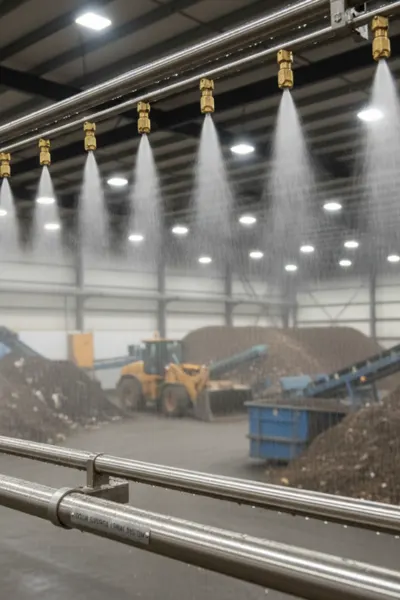Unpleasant odors are commonly produced in various chemical, food processing, and industrial applications due to airborne particles or gases. To effectively eliminate these odor-causing particles, a fine spray can be introduced that either absorbs or reacts with the particles to neutralize the odor. Several odor-battling chemicals can be used for spraying, but the ideal spray characteristics remain the same: to deliver the maximum surface area per volume of fluid sprayed, achieved by finely atomizing the spray.

